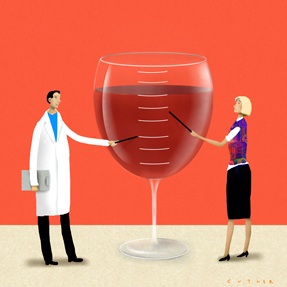What peers are made of and why it matters to medical education
A resident reflects on the importance of his peers to the learning process##mdash;guiding, helping and supporting one another.
I sat at my desk one year ago with a stack of residency recruitment materials, weighing an important decision. I rifled through the papers, studying the constellation of variables within. Some programs highlighted their fellowship match lists, while others emphasized research opportunities and specialized tracks.
Some endorsed their surrounding cities, some their generous benefits packages, and others their internal ties to other institutional programs. Each invariably emphasized a high level of trainee satisfaction and camaraderie. I separated the papers into distinct stacks, in search of something I couldn't be sure I would find: definitive answers to the question of where I wanted to train in internal medicine.

Over the course of interview season, I processed massive amounts of advice, experiences and information. I attempted to catalogue them through comprehensive spreadsheets, and I sought advice from current residents, program graduates and personal mentors. Ultimately, I reviewed everything as deliberately as possible, established non-negotiable priorities and committed to my Match list.
Today, I am immensely satisfied with my decision. I am acutely aware, even as I write this, that most of us only train at one institution, severely limiting our ability and right to compare residency programs. As I suggested in a blog post almost a year ago (“The Match sets medical students in search of themselves,” ) “getting it right” or picking “the perfect program” is not the ultimate point of the process.
Instead, it's to learn something meaningful about our priorities and, having done so, select complementary residency programs. Some priorities will be specific to our individual situations, while others are more generalizable. Based on my experiences this year, perhaps the most important from the latter group—one to which countless residents can likely attest—is confidence in the caliber and substance of one's residency peers.
Amid the busyness of residency training, one thing quickly becomes clear: A majority of our education comes from our peers. Conferences, didactics, individual reading and simulations all have discrete places within graduate medical education. Teaching from seasoned attending physicians is also always prized, if sometimes rare. But despite ever-evolving emphases on multimodal, innovative approaches to education, peer-to-peer education remains central to our clinical maturation.
On one level, this seems obvious. As residents, we spend only small handfuls of time with attending physicians and acclaimed experts. Clinical responsibilities and patient care sometimes supersede educational obligations, and rigorous schedules absorb time and energy that could otherwise go toward individual reading.
Education, then, logically falls to those with whom we spend the most time, the peers with whom we work through late nights and post-call days. My co-residents and I have helped each other in everything from ordering “Phos/NaK” electrolytes to selecting diagnostic imaging to performing bedside procedures. By virtue of availability, our colleagues frequently become our most consistent and practical teachers.
On another level, however, peer education is far more than information transfer. There are lessons that go beyond clinical knowledge and procedural skill: how to handle “difficult” patients; how to triage competing care needs; how to appropriately escalate care and seek help; how to discern when and how to deliver bad news; how to artfully coordinate interdisciplinary care; how to appreciate and support strengths and weakness in team members (students, peers, seniors, nurses, etc.); and how to sustain ourselves and our values throughout.
The clinical knowledge I have gained from my peers is unquestionably valuable. But in some ways there have been even more important lessons, ones that reaffirm my choices last January and impart an undeniable, if unexplainable, confidence that I didn't need to “get it right” yet somehow got it right anyway. Through their unsolicited help during long days, abundant support during a recent family crisis, skillful input with my socially complex patients, and overall concern about my contentment and happiness, I am learning what my peers are made of. Through them, I am also learning more about what I am made of.
As such, both the caliber and character of our peers are crucial to our clinical educations. Intelligent colleagues are requisite for learning the foundations of medical practice. But without communities defined as much by strong character as by competence, we risk losing opportunities to learn, teach and mature together in the leadership, communication and empathy needed to artfully apply the science of our work.
Ultimately, then, my humble exhortation to my community is threefold:
To residency applicants, consider paying attention to if and how programs value and select residents exemplifying strong academic caliber and personal character. Over the next three years, the resulting camaraderie and culture can affect your satisfaction and education in ways you can't know now.
To residency leadership and educators, please know how important it can be to value and prioritize those who are as thoughtful and reflective as people as they are promising as clinicians, especially when the former so visibly empowers the latter. All programs readily agree with such sentiments, but true intentionality is easily identified and appreciated by both those considering and representing residency programs.
To my fellow residents, my hope is that we continue to model the kind of behavior and holistic education we desire to see among peers. Shared responsibility will always bind individual action to group culture, and each of us has an important role to play in enacting our collective ideals into fuller reality.



